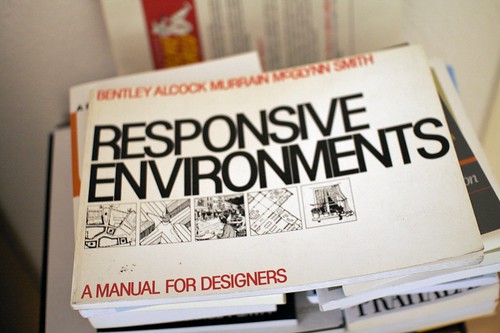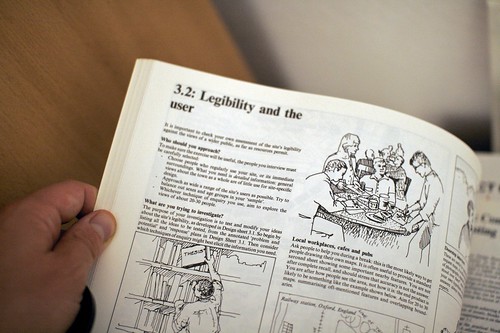 Awesome encounter the other day at the flea market in Geneva: Responsive environments: a manual for designers by Sue McGlynn, Ian Bentley, Graham Smith (1985). I bought it right away and started perusing this interesting compendium of urban design principles. Very practical and straight to the point, exemplified with illustrations and drawings, it shows how to crate environments that do not alienate but offer comprehensible, friendly and controllable places.
Awesome encounter the other day at the flea market in Geneva: Responsive environments: a manual for designers by Sue McGlynn, Ian Bentley, Graham Smith (1985). I bought it right away and started perusing this interesting compendium of urban design principles. Very practical and straight to the point, exemplified with illustrations and drawings, it shows how to crate environments that do not alienate but offer comprehensible, friendly and controllable places.
The whole book is about this:
"The design of a place affects the choices people can make, at many levels:
"
- Permeability: where people can go and where they cannot.
- Variety: the range of uses available to people
- Legibility: how easily people can understand what opportunities it offers
- Robustness: the degree to which people can use a given place for different purposes.
- Visual appropriateness: the detailed appearance of the place make people aware of the choices available.
- Richness: people's choice of sensory experiences
- Personalization: the extent to which people can put their own stamp on a place.
For each of these, there are interesting assignments such as doorstep interviews or probing people at street corner with peculiar photographs:

Why do I blog this? surely some insightful material to chew on, will try to spend more time on it and connect these thoughts with Dan Hill's discussion of hackability and design. So far, I like how the book offer interesting models that can go beyond architecture or urban planning.